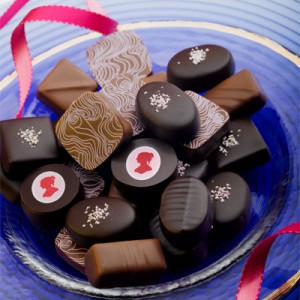One of the strangest anecdotes to emerge from the already larger-than-life annals of Louis XIV’s reign concerns a perfectly forgettable woman, the Marquise de Coëtlogon, who lives on in infamy because she (apparently) had a chocolate addiction and the famed letter-writer Madame de Sévigné found out about it.
As the epistolary paparazzi of her age, Sévigné caught on paper more extraordinary plots, rumors, oddities, triumphs, and scandals than any other courtier at Versailles. To be in her midst was to risk public exposure—although she wrote her sensational tales in letters to her daughter who lived far from court in the 1670s and 80s, they also circulated regularly to others. If she was nearby when a wedding was announced or a dinner party bombed, it went out with the evening post and could be trotted out for months to come when the perfect occasion presented itself. Such was the fate of the Marquise de Coëtlogon’s darkest day.
Her story began in simple aristocratic fashion: Péronelle-Angélique de la Villeléon, hier of the noble Bois-Feillet Manor in Brittany, grew up to marry René-Hiacinthe, the Marquis de Coëtlogon who served as Governor of Rennes in the ranks of Maréchal de France and descended from a family of 12th-century knights. Their proud houses were joined on July 3, 1664 and Péronelle-Angélique became a Marquise. In 1669, she conceived a child and, for reasons unknown, drank a lot of hot chocolate.
Then a new sensation in Paris, chocolate had arrived from Mesoamerica via Spain. From the early 1670s, chocolate attracted the attention of medical and mercantile communities that saw in it a potential goldmine. It was hailed in medical treatises as a potent drug whose biological effects could not be entirely separated from its foreignness. Presented as a sophisticated cure whose misuse could cause pain or worse, chocolate was tainted by concerns about excess and magical power. No wonder Paris eagerly sought it out. Before its effects on the body could be understood and fully separated from concerns about propriety, the high nobility self-medicated and enjoyed it with excited suspicion.
Madame de Sévigné talks several times about chocolate in her letters of 1671, and vehemently so during her daughter’s pregnancy, when she trots out the legend of Coëtlogon the Chocohaulic as a horrific cautionary tale:
“But what do you have to say about chocolate? Are you not afraid of how it can burn the blood? What if all the effects that appear miraculous mask some sort of diabolical combustion? What do your doctors say? In your fragile state, my dear child, I need your word [that you will not drink it], because I fear that you will suffer these problems. I loved chocolate, as you know. But I think it did burn me; and furthermore, I have heard many terrible stories about it. […] The Marquise de Coëtlogon drank so much chocolate when she was pregnant last year that she gave birth to a baby who was black as the devil and died.” (25 October 1671, translation mine)
Thus, the legacy of the ill-fated Marquise, about whom we know little else, was to have her greatest personal misfortune showcased in a story about the hazards of chocolate. The absurdity (not to mention latent racism) of the claim notwithstanding, Sévigné records a mentality that found thrill and danger in the exoticism of the foreign drink in the days before it became fashionable in Europe to overindulge in the pleasures of chocolate. In an odd twist of fate, Sévigné, who learned to love her hot cacao, was immortalized on the marquis of a maison de chocolat in 1898. Marquise de Sévigné chocolate shops still thrive in Paris today and her face circulates in silhouette on their signature morsels.
Christine A. Jones is Associate Professor of French and CLCS at the University of Utah and a regular contributor to W&M.

